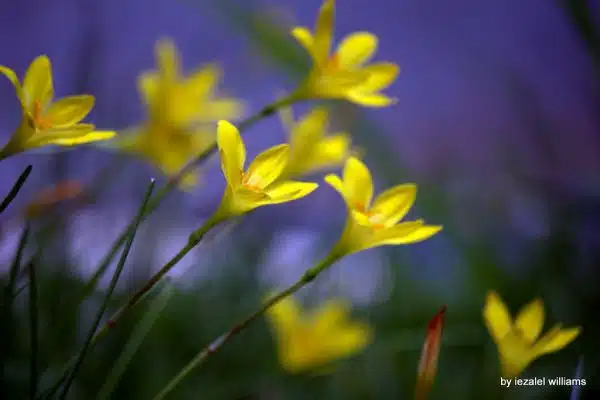Narcissus, commonly known as daffodils, are one of the most popular spring-flowering bulbs. They come in a range of colors and sizes, making them an excellent addition to any garden or indoor space. However, what if you could enjoy the beauty of these flowers all year round? With some careful planning and preparation, it is possible to force paperwhite narcissus to bloom indoors.
Forcing paperwhite narcissus involves manipulating the growing conditions to encourage the plant to grow and flower out of season. This process requires some patience and attention to detail but can be a rewarding experience for any horticulturist. In this article, we will explore the steps involved in forcing paperwhite narcissus to bloom indoors, including choosing the right bulbs, providing adequate lighting and temperature conditions, and caring for your plants throughout their growth cycle. By following these simple tips, you can enjoy the beauty of spring blooms in your home all year round.
Understanding Paperwhite Narcissus
Paperwhite Narcissus is a type of indoor plant that is native to the Mediterranean region. It is a member of the larger Narcissus family, which includes over 50 different species. Paperwhite Narcissus is known for its beautiful white flowers and strong fragrance, making it a popular choice for indoor gardening enthusiasts.
The history of Narcissus breeding dates back to ancient times, with evidence of cultivation found in both Greek and Roman literature. Over time, many different varieties of Narcissus have been developed through selective breeding. Today, there are over 13,000 registered cultivars available worldwide.
Paperwhite Narcissus comes in several different varieties, each with its unique characteristics. The most common varieties include Ziva, Inbal, and Galilee. Ziva is known for its early bloom time and strong fragrance, while Inbal produces large clusters of flowers on each stem. Galilee has a more delicate appearance with smaller blooms but still produces a lovely aroma.
To successfully force Paperwhite Narcissus to bloom indoors, it’s essential to choose the right bulbs for your desired outcome. By selecting high-quality bulbs from reputable suppliers and following proper planting techniques, you can ensure that your plant will thrive and produce beautiful blooms in no time.
Choosing The Right Bulbs
Like a painter selecting colors from their palette, choosing the right bulbs is crucial in creating a beautiful indoor garden. Bulb storage plays a vital role in ensuring that the bulbs are healthy and ready to bloom. Before purchasing any bulbs, make sure to check if they have been stored properly. Avoid buying bulbs that are soft or moldy, as these are signs of improper storage conditions.
Forcing techniques can also be used to stimulate the growth process of your paperwhite narcissus bulbs. This technique involves manipulating the environmental conditions (such as temperature and light) to force the bulb into blooming earlier than it would naturally. One popular forcing technique for paperwhite narcissus is to chill them in a refrigerator for six weeks before planting them in soil. This process simulates winter conditions and encourages early blooming.
Once you have chosen your bulbs and decided on your forcing technique, it’s time to prepare your container. The container should be large enough to accommodate both the bulb and its roots while providing adequate drainage. It’s important to choose a container that complements the style of your home decor, as this creates an aesthetically pleasing space that can be enjoyed by all who enter. With careful consideration given to bulb storage, forcing techniques, and container selection, you’ll have a thriving indoor garden filled with beautiful blooms in no time!
Preparing Your Container
When growing paperwhite narcissus indoors, a soil choice with good drainage is essential. The bulbs should be planted at a depth of three to four times their width. Watering should be done once the soil surface is dry and done to the point of saturation. Too much water can cause the bulbs to rot. During the active growing period, the container should be checked daily and watered as necessary. When the flowers are spent, the foliage should remain until it turns yellow before removing. After the bulbs have finished flowering, they can be discarded or stored in a cool, dry place for the next season.
Soil Choice
To ensure that your paperwhite narcissus blooms indoors, it is crucial to prepare the container properly. One important factor to consider when preparing your container is the soil choice. The type of soil you use plays a significant role in the growth and development of your paperwhite narcissus.
When choosing soil for your container, make sure to select a well-draining medium that allows excess water to escape. Additionally, it is essential to check the pH balance of the soil since paperwhites prefer slightly acidic soil with a pH between 6 and 7. If the pH balance is too high or too low, it may result in stunted growth or yellowing leaves. Furthermore, consider using a nutrient-rich potting mix that provides adequate nutrients for your paperwhite narcissus.
It is also vital to choose a soil mix with appropriate nutrient content for optimal growth. The ideal potting mixture should contain both organic and inorganic materials such as peat moss, perlite, vermiculite, and compost. These materials help retain moisture while providing adequate drainage and nutrients necessary for healthy plant growth. By selecting an appropriate soil mix with proper nutrient content, you can ensure that your paperwhite narcissus flourishes indoors and blooms beautifully throughout its life cycle.
Planting Depth
When it comes to preparing your container for paperwhite narcissus, there are various factors to consider. One crucial aspect is the planting depth of the bulbs. Proper planting techniques play a vital role in determining the growth and development of your paperwhites.
The ideal planting depth for paperwhite narcissus bulbs is around three inches. Planting too shallow would cause the bulb’s roots to dry out, while planting too deep will delay blooming or prevent flowering altogether. It is also essential to ensure that the soil quality remains consistent throughout the container, as uneven soil can lead to uneven growth and blooming.
Overall, proper planting depth is crucial for optimal growth and blooming of paperwhite narcissus in indoor containers. By following these guidelines and using appropriate soil quality, you can ensure that your paperwhites bloom beautifully throughout their life cycle, providing a delightful addition to any indoor space.
Watering Frequency
As a horticulture expert, it is essential to understand that watering frequency plays a critical role in the growth and development of paperwhite narcissus in indoor containers. Overwatering can lead to waterlogged soil, which can cause bulb rot and stunted growth. On the other hand, underwatering can result in dry roots and leaves, leading to a withering plant.
The optimal watering frequency for paperwhite narcissus is once every five to seven days or when the top inch of soil feels dry to the touch. It is crucial to ensure that the soil remains moist but not waterlogged. To prevent overwatering, make sure that your container has adequate drainage holes to allow excess water to escape.
In conclusion, proper watering frequency is crucial for maintaining healthy paperwhite narcissus in indoor containers. By following these guidelines and preventing overwatering, you can ensure that your plants thrive and provide a beautiful addition to any indoor space.
Selecting The Right Soil
Now that you have prepared your container, it is crucial to select the right soil for your paperwhite narcissus bulbs. The quality of the soil directly affects the growth and development of your flowers, so it’s essential to choose a nutrient-rich soil that drains well. A good soil mix for paperwhite narcissus should be loose, well-draining, and rich in organic matter.
Soil nutrients are vital for healthy plant growth. When selecting a soil mix, look for one that is high in nutrients like nitrogen, phosphorus, and potassium. These elements promote strong root growth and help plants develop sturdy stems and leaves. Additionally, many soil mixes come with added fertilizers to provide an extra boost of nutrients to your bulbs.
Drainage importance cannot be overstated when it comes to growing paperwhite narcissus bulbs indoors. Poorly draining soils can lead to waterlogged bulbs and root rot – both of which can kill your plants. To ensure proper drainage, choose a soil mix that includes coarse sand or perlite. These materials improve drainage by creating air pockets in the soil while allowing excess water to drain away from the roots.
As you prepare your container and select the right soil mix for your paperwhite narcissus bulbs, keep in mind that proper watering is also crucial for their success. In the next section, we’ll discuss how much water these plants need and how often they should be watered to encourage healthy growth and beautiful blooms.
Watering Your Bulbs
Like a thirsty traveler in the desert, paperwhite narcissus bulbs can also crave for water. But just like how drinking too much water can be harmful to humans, overwatering your bulbs can also cause harm. To ensure the health and blooming of your paperwhite narcissus, proper watering techniques must be observed.
Overwatering prevention is crucial in maintaining healthy paperwhite narcissus bulbs. When bulbs are constantly submerged in water, they become prone to rotting and fungal diseases that might affect their growth and bloom. To prevent this from happening, it is important to only water your bulbs when the top inch of soil is dry to the touch.
Watering frequency is also an important aspect of caring for your paperwhite narcissus. For best results, it is recommended to water them once a week or whenever the top inch of soil feels dry. This will ensure that your bulbs receive enough moisture while preventing over-saturation that could lead to bulb rotting.
To guarantee a successful indoor blooming of your paperwhite narcissus, proper watering techniques must be followed. Overwatering prevention and watering frequency are key factors in keeping your bulbs healthy and thriving. In the next section, we will discuss another essential aspect of caring for your paperwhite narcissus – providing adequate light.
Providing Adequate Light
Providing Adequate Light:
Paperwhite narcissus bulbs require adequate light to bloom indoors. In areas with low light, using grow lights or artificial light sources can help provide the necessary amount of light for the bulbs to bloom. Grow lights are a popular option as they are specifically designed to support plant growth and development.
When using grow lights or artificial light sources, it is important to consider the distance between the bulb and the plant. If the bulb is too close to the plant, it can cause damage. On the other hand, if it is too far away, it may not provide enough light for optimal growth. To ensure proper distance, follow the manufacturer’s instructions or consult with a horticulture expert for guidance.
In addition to providing sufficient light, using grow lights or artificial light sources can also add an element of ambiance to your indoor gardening space. The warm glow of a grow light can create a cozy atmosphere in your home while also supporting healthy plant growth. Consider incorporating them into your indoor gardening setup for both practical and aesthetic purposes.
With proper lighting conditions in place, you can now turn your attention to controlling temperature conditions for your paperwhite narcissus bulbs. By ensuring that they are exposed to the right temperatures at each stage of their growth cycle, you can help promote healthy blooms and encourage overall plant health.
Controlling Temperature Conditions
Temperature regulation is a key factor in forcing paperwhite narcissus to bloom indoors. A temperature range of 50-60 degrees Fahrenheit is recommended for optimal results. Humidity levels should be kept between 40-50%, and a humidifier may be necessary to maintain this. Light exposure should also be considered, as paperwhite narcissus requires at least 8 hours of direct sunlight each day. This can be difficult to provide indoors, so a combination of artificial lighting and direct sunlight should be used to best replicate natural light conditions. Finally, water should be kept at a consistent level and the bulbs should be rotated occasionally to prevent the stems from becoming too long. With the right conditions, paperwhite narcissus can be successfully forced to bloom indoors.
Temperature Regulation
To get your paperwhite narcissus to bloom indoors, controlling temperature conditions is crucial. As a horticulture expert, I recommend paying close attention to the thermostat settings and heating options in your indoor space. This will help you regulate the temperature and create the perfect environment for your plants to thrive.
The optimal temperature for paperwhite narcissus to bloom is between 50-60°F (10-15°C). To achieve this temperature range, consider using a cooler room or utilizing heating options that allow for precise temperature control. It’s important to avoid placing your plants near heaters or in direct sunlight as this can cause them to overheat and dry out.
If you’re having trouble regulating the temperature in your indoor space, investing in a thermostat with programmable settings can be incredibly helpful. This will allow you to create different temperature zones throughout your home and adjust them based on the needs of your plants. By taking these steps, you’ll be well on your way to forcing beautiful blooms from your paperwhite narcissus indoors.
Humidity Levels
As a horticulture expert, I understand the importance of controlling temperature conditions for indoor plants. However, temperature is not the only factor that plays a crucial role in plant growth and development. Humidity levels also need to be taken into consideration when growing paperwhite narcissus indoors. High humidity levels can cause mold growth and other issues that can harm your plants.
To prevent mold growth and ensure optimal humidity levels for your paperwhite narcissus, it’s important to keep the air in your indoor space dry. This can be achieved by using dehumidifiers or simply opening windows to allow fresh air to circulate. Additionally, avoid overwatering your plants as this can increase the moisture level in the air around them.
Incorporating dehumidifying tips into your indoor gardening routine will help you maintain healthy humidity levels for your paperwhite narcissus. By doing so, you’ll promote healthy plant growth and prevent mold from harming your blooms. Remember, controlling temperature conditions is just one aspect of successful indoor gardening – paying attention to humidity levels is equally important for achieving beautiful results.
Light Exposure
Controlling temperature conditions is one of the most important aspects of indoor gardening. However, it’s not the only factor that affects plant growth and development. Another critical element that should be taken into account is light exposure. Maximizing growth for paperwhite narcissus requires proper timing and duration of light exposure.
Paperwhite narcissus needs ample amounts of sunlight to thrive. Light exposure plays a vital role in photosynthesis, which is essential for plant growth. For optimal results, paperwhite narcissus should receive at least six hours of direct sunlight per day. If natural light isn’t available, artificial lighting can be used to supplement the required amount.
Timing is also crucial when it comes to light exposure for paperwhite narcissus. They need bright light during the early stages of growth to promote healthy foliage and root development. Once they start developing buds, however, they require less intense lighting to prevent premature blooming or flower damage. By taking these factors into consideration and adjusting your lighting accordingly, you’ll maximize growth potential for your plants and achieve beautiful blooms in no time.
Fertilizing Your Bulbs
Like any living organism, bulbs require proper nutrition to thrive and bloom. Fertilizing your paperwhite narcissus is a crucial step in ensuring their growth progress. Organic alternatives to commercial fertilizers are becoming increasingly popular among gardeners. One example is fish emulsion, which is high in nitrogen and phosphorus that stimulate bulb growth.
Timing considerations for fertilizing your bulbs are important to keep in mind. It’s best to fertilize your paperwhite narcissus at the time of planting or transplanting, as this gives them a boost of nutrients right from the start. Once they’ve sprouted, you can fertilize every two weeks until they stop blooming. Avoid over-fertilization as it can lead to excessive foliage growth instead of flowers.
When using fertilizers, always follow the instructions on the label carefully. Applying too much fertilizer can damage the roots and lead to stunted growth or even death of your bulbs. Monitoring growth progress regularly will allow you to make adjustments in fertilization if needed. In the next section, we’ll discuss how you can track your paperwhite narcissus’ progress and what signs to look out for when monitoring their development.
Monitoring Growth Progress
- When growing paperwhite narcissus indoors, close monitoring of light, temperature, and watering conditions is essential for successful blooming.
- To ensure adequate light, the paperwhite narcissus should be placed in a south-facing window for at least 6 hours of direct sunlight each day.
- The ideal temperature for paperwhite narcissus is between 60-68 degrees Fahrenheit.
- Paperwhite narcissus should be kept moist but not overly wet, and the soil should be allowed to dry out between waterings.
- To ensure the flower is getting the proper amount of water, it is beneficial to use a moisture meter to measure the water levels in the soil.
- It is important to monitor the growth of the paperwhite narcissus regularly and adjust the light, temperature, and watering conditions as needed.
Monitoring Light
As horticulture enthusiasts, we all desire to witness the growth and blooming of our plants. One of the crucial factors that can determine the success of indoor gardening is lighting. The light intensity and duration are essential elements that must be monitored if you want to force paperwhite narcissus to bloom indoors.
Paperwhite narcissus requires bright light for at least six hours daily for proper growth and development. However, excessive light intensity or prolonged exposure to light can cause damage to your plant. Therefore, it is important to ensure that the light intensity falls between 1500-3000 foot-candles and not more than 12 hours of continuous lighting per day.
In conclusion, monitoring light is a critical aspect of forcing paperwhite narcissus blooms indoors. You should ensure that your plant receives adequate light intensity and duration without causing damage due to overexposure. By paying close attention to this aspect and providing the right growing conditions, you can enjoy a beautiful display of blooms from your paperwhite narcissus.
Temperature
As horticulture enthusiasts, we aim to provide the best growing conditions for our plants to thrive. A crucial factor that can impact plant growth progress is temperature. The ideal temperature range for paperwhite narcissus is between 50-70°F (10-21°C). Temperature plays a vital role in regulating the plant’s metabolic processes, which ultimately affects its growth and development.
The impact of temperature on paperwhite narcissus growth progress can be significant. Exposure to temperatures outside the ideal range can cause stunted growth and delay flowering or even prevent it altogether. High temperatures can also cause foliage to yellow prematurely, resulting in an unattractive appearance. Conversely, low temperatures can lead to root rot or waterlogging, which can be fatal to your plant.
Therefore, monitoring temperature is essential when forcing paperwhite narcissus blooms indoors. You should ensure that your plant receives an optimal temperature range for proper growth and development. By providing consistent monitoring of the temperature and maintaining a suitable environment, you can help your plant achieve its full potential and enjoy beautiful blooms from your paperwhite narcissus.
Watering
As horticulture enthusiasts, we strive to provide the best growing conditions for our plants to thrive, including paperwhite narcissus. Temperature is a crucial factor that can impact the plant’s growth progress, and it requires consistent monitoring to ensure optimal conditions. However, temperature is not the only factor that affects growth progress. Watering frequency and water temperature are other critical factors that require attention.
Watering is an essential component of plant care, and paperwhite narcissus is no exception. Proper watering helps ensure healthy growth and development while preventing issues such as root rot or waterlogging. The frequency of watering depends on various factors such as humidity levels, soil type, and temperature. Generally, you should water your paperwhite narcissus when the top inch of soil feels dry to the touch.
Water temperature is another crucial factor to consider when caring for your paperwhite narcissus. The ideal water temperature range for this plant is between 50-70°F (10-21°C). Using cold water can shock the roots and delay growth progress or even cause damage to your plant. On the other hand, using hot water can scald the roots and cause irreparable damage. Therefore, it’s essential to use water at an appropriate temperature range for optimal results.
Dealing With Common Issues
Common mistakes in forcing paperwhite narcissus to bloom indoors include planting them too deep or too shallow, not providing enough moisture, and not giving them enough light. These issues can all be avoided by carefully following proper planting techniques and ensuring that the bulbs are kept in a location with bright but indirect sunlight.
If you find that your paperwhite narcissus bulbs are not blooming as they should, there are several troubleshooting techniques that you can try. One option is to increase the amount of water you’re giving them, as these plants require plenty of moisture to thrive. You may also want to consider moving the bulbs to a sunnier location if they’re not getting enough light.
Overall, it’s important to be patient when trying to force paperwhite narcissus bulbs to bloom indoors. While these plants typically bloom within 4-6 weeks of planting, they may take longer if conditions aren’t ideal. By taking the time to address common issues and troubleshoot any problems that arise, however, you should be able to enjoy beautiful blooms from your paperwhite narcissus bulbs in no time.
As you wait for your paperwhite narcissus bulbs to bloom, it’s important to think about staking your plants once they do start producing flowers. This will help keep them upright and prevent them from falling over due to their weight. There are several different materials you can use for staking purposes, including bamboo stakes or metal rings. Be sure to choose an option that works well for your specific plant and follow proper staking techniques for best results.
Staking Your Plants
Vertical support is an essential element of indoor plant maintenance. Providing adequate support for your plants helps to keep them healthy and upright, and it can also help to encourage blooming. DIY stakes are a great option for staking your paperwhite narcissus indoors.
To make your own stakes, simply cut down bamboo skewers or wooden dowels to the desired length and sharpen one end. Gently insert the pointed end into the soil near the base of the stem, taking care not to damage any roots. As the plant grows taller, gently tie it to the stake using twine or soft garden ties.
Alternatively, you can use a plant trellis as an alternative method for vertical support. These are especially useful if you have multiple plants in one container or if you want to create a more decorative display. Simply choose a trellis that fits your container size and place it in the soil near your narcissus bulbs. As your plants grow taller, gently train them onto the trellis using twine or garden ties.
Supporting your blooms is crucial for their longevity and overall health. In our next section, we’ll discuss how to properly care for your blooms once they appear so that you can enjoy them for as long as possible.
Supporting Your Blooms
Creating a beautiful indoor garden can be an enjoyable and rewarding experience. One way to add a touch of elegance to your space is by forcing paperwhite narcissus to bloom indoors. With the right care, these delicate flowers can fill your home with their sweet fragrance and vibrant colors.
Supporting your blooms is crucial for achieving success. Here are some tips to keep in mind:
- Water your narcissus regularly without allowing the soil to become too saturated.
- Provide plenty of sunlight or artificial light to help them grow.
- Use decorative accessories like vases, pots, or baskets to enhance their beauty.
- Incorporate them into your maintenance routine by trimming dead leaves and flowers and checking for pests regularly.
By following these guidelines, you can ensure that your paperwhite narcissus blooms stay healthy and full of life throughout their lifecycle. With a little bit of dedication and patience, you’ll have a stunning indoor garden that will bring joy to all who enter your home.
As you enjoy watching your paperwhite narcissus grow and thrive, remember that there are many other beautiful plants and flowers that you can add to your collection. Whether it’s succulents, herbs, or tropical plants, there’s always something new to explore in the world of indoor gardening. So why not start today and see where it takes you?
Enjoying Your Indoor Garden
Watering techniques for forcing paperwhite narcissus to bloom indoors should include frequent and light watering. Keeping the soil moist at all times is critical in order to stimulate the blooming process. Plant care tips for paperwhite narcissus indoors should include keeping the plant in an area with plenty of sunlight and with temperatures between 10-15 degrees Celsius. Fertilizing the plant with a specially formulated plant food is also helpful for promoting healthy growth and blooming.
Watering Techniques
For indoor gardening enthusiasts who want to grow healthy and beautiful plants, mastering the art of watering is essential. One essential technique for watering indoor plants is deep watering. Deep watering involves saturating the soil until water seeps through the drainage holes at the bottom of the pot. This technique encourages deeper root growth and prevents soil compaction, which can hinder plant growth.
To determine how frequently you should water your indoor plants, check their moisture level regularly by sticking your finger into the soil about an inch deep. If it feels dry, it’s time to water again. However, it’s important not to overwater your plants since this can lead to root rot and other issues. A good rule of thumb is to wait until the top half-inch of soil is dry before watering again.
Remember that different types of indoor plants have varying watering needs, so be sure to research what works best for each plant species in your collection. With proper watering techniques and consistent care, you’ll be rewarded with a thriving indoor garden that will bring joy and beauty to your home all year round.
Plant Care Tips
Now that you have mastered the art of watering your indoor plants using deep watering techniques, it’s time to move on to other important aspects of plant care. One essential aspect is pruning, which involves cutting back overgrown or damaged parts of the plant. Pruning not only promotes healthy growth but also enhances the overall appearance of your indoor garden.
To maintain healthy and beautiful plants, it’s crucial to understand the specific needs of each plant species in your collection. This includes knowing their optimal watering frequency and pruning techniques. While some plants may require frequent watering and regular pruning, others may need less water and minimal pruning. Researching and keeping track of these requirements can help ensure that your plants thrive.
In addition to watering and pruning, other factors that contribute to a successful indoor garden include proper lighting, fertilization, and pest control. By dedicating time and effort to understanding these aspects of plant care, you can create a beautiful and thriving indoor garden that brings joy and peace to your home environment.
Extending Your Blooms’ Lifespan
Once your paperwhite narcissus has bloomed, you may be wondering how to extend its lifespan. One way to do this is by cutting the stems at an angle and placing them in cool water. Ensure that the water level only covers the bottom of the stems to prevent rotting. You can also add a few drops of bleach to the water to prevent bacterial growth.
Creating arrangements with your paperwhite narcissus is a great way to enjoy their beauty for even longer. Combine them with other winter blooms like amaryllis and hyacinths for a stunning display. Consider using unconventional vases like teapots or mason jars for a unique touch. Decorating with blooms not only adds life and color to your space but also brings joy and relaxation.
Saving your bulbs for future use is another way to extend the lifespan of your paperwhite narcissus. After they have finished blooming, allow the leaves to yellow and die back naturally before digging up the bulbs. Store them in a cool, dry place until it’s time to plant them again next year. With proper care, you can enjoy beautiful blooms year after year from these hardy bulbs.
Saving Your Bulbs For Future Use
Extending the lifespan of your blooms is a great way to maximize your investment in time and money. However, if you want to keep enjoying the beauty of your paperwhite narcissus, you can store them for future use. Storing bulbs is an easy process that requires little effort, but it does require some attention to detail.
First, you need to dig up the bulbs once they have finished blooming. Then, clean the soil off of them and let them dry for a few days. Once they are dry, store them in a cool, dry place until it’s time to plant them again. You can store your bulbs in mesh bags or boxes with holes in them to allow air circulation.
By storing your bulbs properly, you will not only ensure that they survive until next season but also maximize their blooms’ potential. Providing adequate care during storage will help prevent any damage or rot from occurring before replanting. With a little bit of effort and attention to detail, you can enjoy beautiful blooms year after year!
Conclusion
Paperwhite Narcissus is a popular winter plant that can be grown indoors. In this article, we have discussed the best practices for forcing Paperwhite Narcissus to bloom indoors successfully.
Firstly, it is crucial to choose healthy bulbs and prepare the container with well-draining soil. Watering is also essential, and it is important to avoid overwatering your bulbs. Supporting your blooms will ensure they grow tall and healthy, adding beauty to your indoor garden.
Furthermore, extending the lifespan of your blooms can be achieved by placing them in cooler temperatures and avoiding direct sunlight. Saving your bulbs for future use is also possible by storing them correctly after blooming.
In conclusion, with proper care and attention, you can enjoy beautiful Paperwhite Narcissus blooms indoors during the winter months. Remember to choose healthy bulbs, prepare the container correctly, support your plants as they grow, extend their lifespan by placing them in cooler temperatures and save your bulbs for future use. Follow these tips and enjoy an indoor garden full of joy and beauty!
Image Credits
- “Narcissus – The Truth is OUT with NO FEAR IMG_1934-001” by iezalel7williams (featured)





























